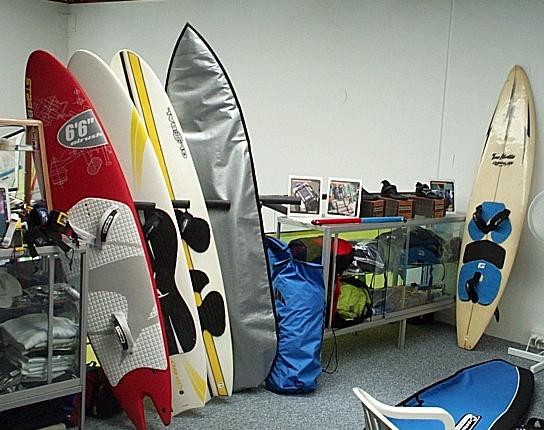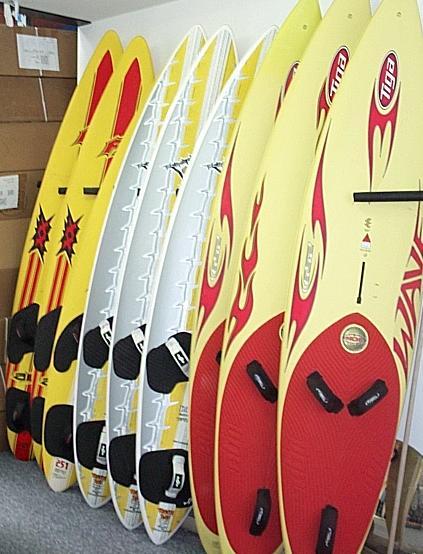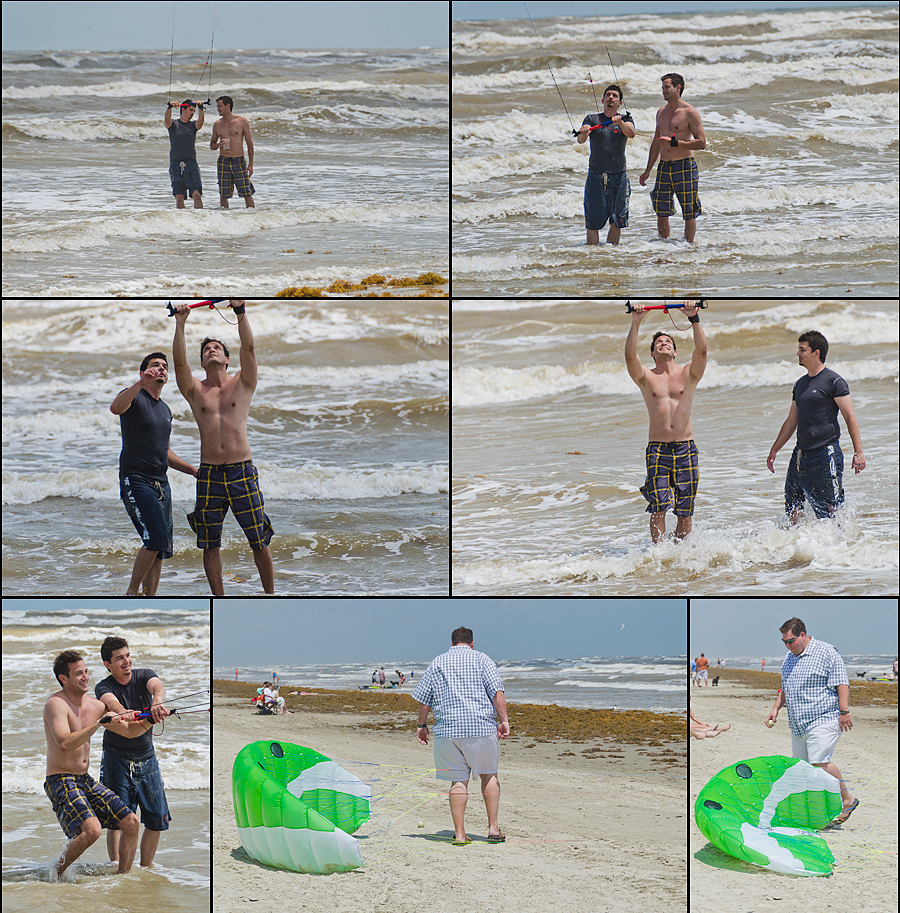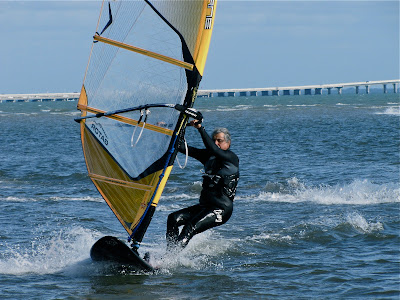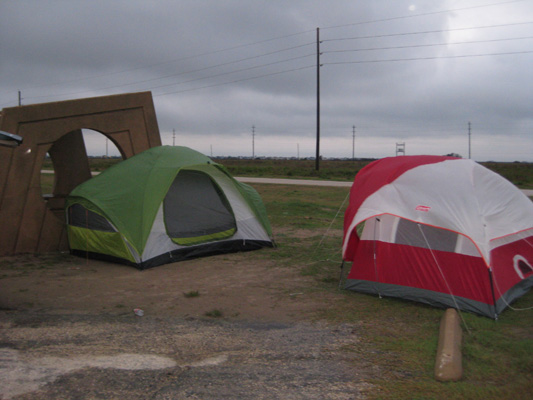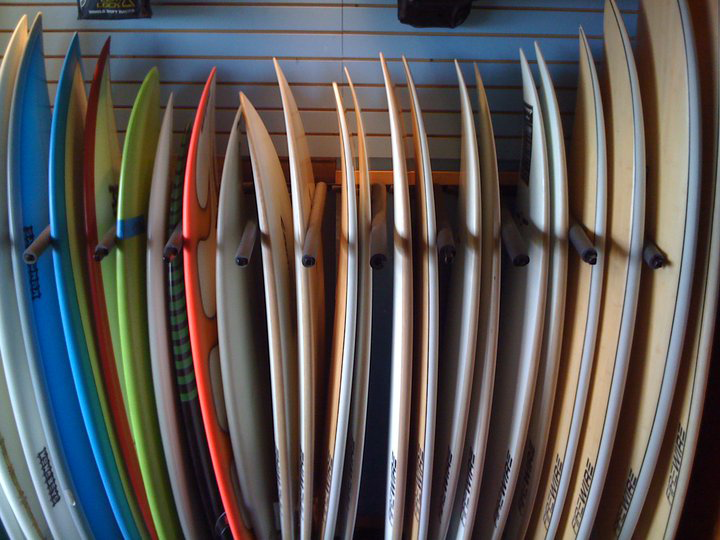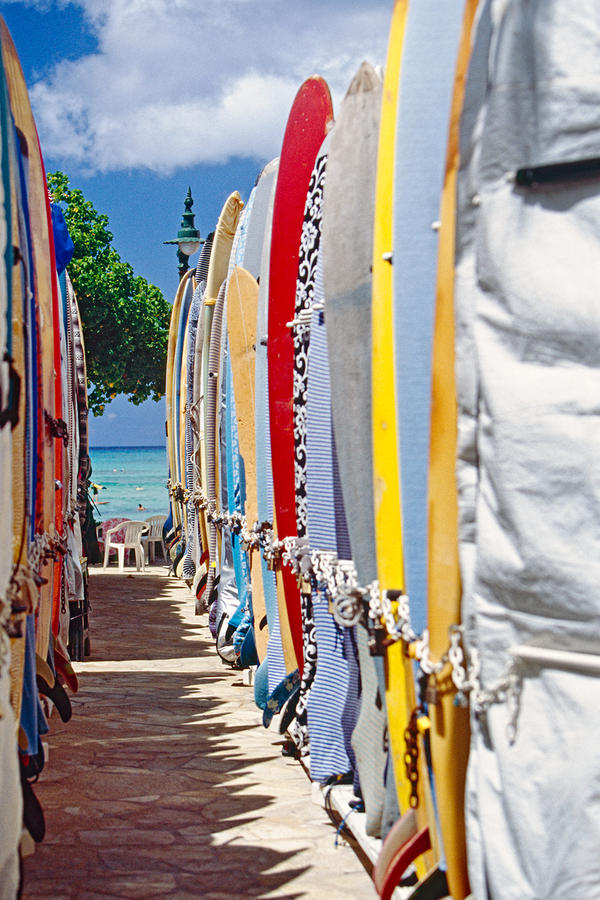Source(google.com.pk)
WindSurf Gear Biography
Windsurfers, Windsurfing Boards, Gear
Windsurfers, Windsurfing Boards, Gear. "Surfing's ginger haired cousin" but seriously Windsurfing is an amazingly fun and challenging sport. We have equipment for every skill-set from beginning surfers to advance wave rippers. From boards to hardware and everything in between The House is your one stop wind shop and has been since 1982! Jibe is the vibe and attitude is everything! 29 years of great prices-selection-outstanding service.2012 windsurfing gear
range release overview
We compiled an at-a-glance guide to the first major releases of 2012 windsurfing equipment.
Most of the descriptive text is from release information supplied, plus a selection of key Brand Manager's added comments on particular products of note
Some brands will only release their new models in August, or even later in some cases, so we'll add information to these pages as it's announced.
Please check back for updates and keep an eye out on The Beach Telegraph for The front of the surfboard is called the nose, the back is known as the tail, and the sides are called rails. The top of the surfboard, where the rider stands, is called the deck.
Everyone but the most expert of surfers should use a leash while surfing. Leashes prevent you from losing your surfboard in a wipeout, so you can retrieve it more quickly and catch more waves. Most importantly, however, leashes help you keep control of your board and keep it from hitting other surfers. A board leash with a padded ankle strap will provide comfort and a swivel leash will minimize tangles.
Get the right size surfboard
Surfboards are sold in feet and inches. Whichever surfboard you buy, it should be at least 6" over your own height.
Longboards: A Longboard (9’ or over) glides across the water, and allows for better balance.
Shortboards: Shortboards (under 7’) are more maneuverable, but paddle slower. You need to take off on the steepest part of a wave and get to your feet quickly.
Wide surfboards: Wider surfboards are more stable.
Thick surfboards: Thicker surfboards are more buoyant, making it easier to paddle and catch waves.
Ultra-thin or light shortboards: Ultra-thin, light shortboards are tougher for beginners.
Which type of surfboard is right for you?
Soft boards, longboards, mini mals, and pop-outs are all good boards for beginners. The best surfboard for learning on is broad, light, and thick. Most surfboards are custom built, giving you lots of options for finding the right board.
Soft surfboards: If you are a beginner, you may want to start with a soft surfboard. Soft surfboards, or foamies, are large and buoyant. They are soft enough that they lessen the blow of an impact. The fins on foamies are also usually softer than on other kinds of surfboards. If you decide on a soft surfboard, you may want to move on to a more versatile surfboard fairly quickly. For infrequent or beginning surfer, a soft surfboard is a good choice.
Pop-out surfboards: Surfers looking for a good value surfboard might look into the low-priced pop-out surfboards. These surfboards have a foam core that is covered in fiberglass. Pop-out surfboards are heavier than soft surfboards. They are stable, but aren’t as responsive in the water. This makes them good for beginners. They have an excellent resale value as well.
Shortboards: The shortboard or thruster is a light, easily-maneuverable board designed for quick turns. Shortboards measure from 5'8" to 6'10" in length. The more fins on a shortboard, the better chance you have of getting cut; if you can find a single- or twin-fin surfboard that suits you, consider it a good option.
The Longboard or Malibu surfboard: Longboards generally start at about 9’. The nose is more rounded than that of a shortboard, and the overall shape is different, as well. They may be thicker and tend to have just one fin. The extra length and thickness give them some added stability. Try to avoid very old, heavy boards, however. They can be awkward to use and may not surf as well.
The fish: The fish is shorter, wider and rounder than a typical shortboard. This type of board ranges between 4'8" and 6' in length.
The gun: Bigger waves demand a bigger board. That’s where the gun comes in. These surfboards range from 7'2" to over 12'.
Other surfboard considerations
Beginners don’t need to spend too much on their first board. It’s best to start out on an inexpensive board, as long as it hasn’t been totally thrashed or broken apart and repaired. All the fins should be in place, and the fiberglass shouldn’t have any holes. Check to make sure there are no major cracks where the fins join the board.
Most secondhand boards will have some damage or dents. You can fix dings on your own with a repair kit costing about $20?or you can take it in for professional repair.
Ride the Waves on a Bodyboard
Bodyboards are easy to use and fun for people of all ages. It doesn’t take much experience—just hold onto the sides and start riding the waves.
Some well-known choices include BZ bodyboards, Morey bodyboards, Wave Rebel bodyboards, O'Neill bodyboards, and Gordon & Smith bodyboards.
Use the following guidelines to choose the right bodyboard for you.
Bodyboard size: The top of the bodyboard should come up to about navel height.
Bodyboard shape: Flat bodyboards are better for gentler waters. If you are riding prone as opposed to on one knee, you would be better served with a bodyboard with a larger nose.
Bodyboard rail: You can opt for a 50/50 rail for speed, or choose a 60/40 rail for more control.The numbers describe the angle of the rail.
Set Sail With Windsurfing Gear
Windsurfing combines sailing with riding waves on a board. On the average windsurfing board, the sail is attached to a mast. The boom is the handle you hold to steer the sail. A harness transfers power through your body, relieving arm strain. The universal joint is the piece that attaches the sail to the board.
Choose a windsurfing board
Beginners learning on their own should opt for a board that is at least 11’ long. The centerboard should retract. Kids need a shorter board. You also need to choose the right flotation level for your weight, to make it easier for you to stay upright.
Some popular windsurfing board choices include Gaastra windsurfing boards, Naish windsurfing boards, NeilPryde windsurfing boards, and DaKine windsurfing boards.
Select the right windsurfing sail
The size of the windsurfing sail is based on your weight and the wind strength. A small sail would be most appropriate for your first few times sailing.
WindSurf Gear
WindSurf Gear
WindSurf Gear
WindSurf Gear
WindSurf Gear
WindSurf Gear
WindSurf Gear
WindSurf Gear
WindSurf Gear
WindSurf Gear
WindSurf Gear
WindSurf Gear
WindSurf Gear
WindSurf Gear
WindSurf Gear
WindSurf Gear
WindSurf Gear
WindSurf Gear
WindSurf Gear
WindSurf Gear
WindSurf Gear
WindSurf Gear
WindSurf Gear
Source(google.com.pk)
Kite Surfing Galveston Biography
Galveston Island Surfing
Please support Galveston.com Sponsors.
Planning a Galveston Island getaway? Count on Galveston.com Lodging Reservations! With a vast collection of properties ranging from resort hotels to romantic bed & breakfasts, we've got you covered! more...
Please support Galveston.com Sponsors.
Voted Best Travel Agency in 2005 & 2008 by The Galveston County Daily News, GalvestonCruises.com specializes in cruises from Galveston Island and ports around the globe. Click or call (800)593-8678. more...
Surfing Instruction
1
Surfing Supplies
2
Fresh Catch of the Day
There is a quote Galveston surfers often use - "If you can surf in Galveston, you can surf anywhere!" By this they mean it is hard to surf there because of the Texas coast's bad reputation for producing small, choppy, inconsistent surf. Surfers have long been known to try to keep the best spots to themselves, and this adage exemplifies the tradition of surfers trying to downplay good spots, such as Galveston. Although not a world-renowned surfing mecca, for the committed, there are definitely those perfect days that make it all worthwhile.
Gulf of Mexico
Galveston is the highest place on the Texas coast that gets fairly consistent surf. The Texas coast gets a lot of wind, and kite surfing and wind surfing are very popular as well. The system of sandbars and troughs, coupled with the shallow bottom, causes a thin-walled wave. Because of this, the waves are usually small and gentle- an overhead day is not common.
That said, when a storm system enters the Gulf, or right after one of the many frontal systems that move through the area, there can be days of long, glassy, beautiful, sizable surf that rivals the surf anywhere. Summer is very inconsistent, but the rest of the year, particularly in the spring, it's definitely worth the effort. Because they have to stay tuned into the constantly changing conditions to get the big payoff, surfers in Galveston are among the most committed in the world.
The most consistent spots are along the Seawall, where there are 15 rock jetties and several fishing piers. The most popular breaks are near 25th Street, and near the 37th , 47th, 51st, and 61st Street jetties. In the summer months surfing is allowed on the west end of the island at the beach access roads and between the Flagship pier and 53rd Street. These are called "multi-use areas" and permit surfboards, hard-bottomed boogie boards, wind and kite surfers, other hard-bottomed craft. The area near the Flagship Hotel at 25th is usually a slower, wave that is great for beginners and long boarders, and 37th street is a more performance oriented, aggressive wave.
Inexperienced surfers should stay away from the piers and jetties and not surf on days the Galveston Beach Patrol flies a red flag. Leashes are required on the Seawall beaches during the summer months. All surfers should be familiar with the "multi-use area" regulations in Chapter 8 of the city code. Questions can be directed to the Galveston Beach Patrol at beachpatrol@galvestonparkboard.org, (409)763-4769, or by checking their website at www.galvestonbeachpatrol.com .
Current surf and weather conditions can be found in the Galveston.com Weather Center, while beach and surf webcams are also available with continuously-updated imagery. Check out the Galveston.com Board Room, where you can participate in surfing-related Forums & Blogs, as well as upload your own photos and video!
From Blog.Galveston.com RSS: From the Blogs
Thu, 17 Jan 2013 13:46:31 +0000
Sunny cool days and cold nights to prevail through Friday. Somewhat milder conditions on Saturday should make for near ideal ArtWalk conditions.
Sunny skies with cold nights and cool afternoons will prevail through the end of this week as dry, cold high pressure continues to flow into Texas behind a frontal boundary and eastward moving upper-level low. This morning’s surface weather map shows a cold front extending from the eastern Gulf of Mexico northeast across the coast [...]
Wed, 16 Jan 2013 14:13:35 +0000
Sunshine to return to Galveston after a long absence, with somewhat milder temperatures in the picture for this weekend.
Sunshine will be returning to Galveston after a spell of cloudy, wet cold weather. Temperatures will remain on the chilly to cool side as high pressure continues to funnel cold air into the area. Clouds, however, will disappear as an upper-level low and trough shift off to the east and a high pressure ridge develops [...]
Tue, 15 Jan 2013 13:54:53 +0000
Cold temperatures, cloudy skies and a chance of rain to prevail through early tomorrow, however some sun likely tomorrow afternoon and Thursday
Chilly, breezy wet weather should continue a little while longer before sunshine and somewhat milder temperatures return. Cold high pressure continues to flow into Texas behind a stationary cold front located in the central Gulf of Mexico. Warm, moist air aloft, combined with an upper-level disturbance, will keep clouds, drizzle and rain in the picture [...]
Mon, 14 Jan 2013 14:50:34 +0000
Cloudy, breezy, chilly and wet weather to continue through mid-week
Chilly, breezy wet weather is the picture for the area as a cold high pressure continues to flow into Texas behind a cold front that moved through the area early yesterday. Warm, moist air aloft, combined with an expected upper-level disturbance, will keep clouds, drizzle and rain in the picture through Wednesday. This morning’s surface [...]
Sun, 13 Jan 2013 14:03:58 +0000
Clouds, chilly temperatures and breezy conditions to prevail through mid-week with periods of light rain.
A return to chilly, breezy wet conditions is in store for the area as a cold front pushes offshore this morning and warm air aloft keeps clouds, drizzle and rain in the picture through Tuesday. This morning’s surface weather map shows a cold front extending from northeast Mexico along the Texas coast to a low
Kite Surfing Galveston
Kite Surfing Galveston
Kite Surfing Galveston
Kite Surfing Galveston
Kite Surfing Galveston
Kite Surfing Galveston
Kite Surfing Galveston
Kite Surfing Galveston
Kite Surfing Galveston
Kite Surfing Galveston
Kite Surfing Galveston
Kite Surfing Galveston
Kite Surfing Galveston
Kite Surfing Galveston
Kite Surfing Galveston
Kite Surfing Galveston
Kite Surfing Galveston
Kite Surfing Galveston
Kite Surfing Galveston
Kite Surfing Galveston
Kite Surfing Galveston
Kite Surfing Galveston
Kite Surfing Galveston
Source(google.com.pk)
SurfBoards Biography
Surfboard
From Wikipedia, the free encyclopedia
Jump to: navigation, search
For other meanings see Surfboard (disambiguation).
A stack of boards in Waikiki during a surf competition
A surfboard is an elongated platform used in the sport of surfing. Surfboards are relatively light, but are strong enough to support an individual standing on them while riding a breaking wave. They were invented in ancient Hawaii, where they were known as papa he‘e nalu in the Hawaiian language; they were usually made of wood from local trees, such as koa, and were often over 15 feet (5 m) in length and extremely heavy.[1][2] Major advances over the years include the addition of one or more fins on the bottom rear of the board to improve directional stability, and numerous improvements in materials and shape.
Modern surfboards are made of polyurethane or polystyrene foam covered with layers of fiberglass, cloth and polyester or epoxy resin. The result is a light and strong surfboard that is buoyant and maneuverable. Recent developments in surfboard technology have included the use of carbon fiber. Each year, approximately 400,000 surfboards are manufactured.[3] Longboards, as the name suggests, are longer (often 8 ft/2.4 m or more), and are also thicker and wider, with a more rounded nose than a shortboard, making them stable and buoyant. Shortboards are shorter (5–7 ft/1.5–2.1 m), thinner, and have a more pointed nose. They are not as wide as longboards and are typically more maneuverable. Other variants include guns, longboard guns, olos, fun-boards, fish, eggs, bonzers, quads, tow-boards, and hydrofoils.
Contents
1 Construction
1.1 Polyurethane (P.U) boards
1.2 Balsa boards
1.3 Hollow wooden surfboards
2 Variations
2.1 Shortboard
2.1.1 Egg
2.1.2 Fish
2.1.3 Fun board
2.1.4 Gun
2.2 Longboard
2.2.1 Classic Longboards
2.2.2 Modern Longboards
2.2.3 Tri-Fin
2.2.4 The 2+1
2.2.5 Mini Tanker
2.2.6 The Malibu
2.2.7 Olo
2.2.8 Tandem
2.2.9 Quad
3 Parts
3.1 Bottom
3.2 Concave
3.3 Convex
3.4 Deck
3.5 Fins
3.6 Leash
3.7 Leash cup
3.8 Nose
3.9 Rail
3.10 Rocker
3.11 Stringer
3.12 Tail
4 See also
5 References
Construction
Polyurethane (P.U) boards
Surfboards are usually constructed using polyurethane foam. They are made stronger with one or more small pieces of wood, called a stringer, going down the middle of the board. The foam is molded into a "blank", in the rough shape of a surfboard.[4] Once the blanks have been made they are given to shapers. Shapers then cut, plane, and sand the board to its specifications. Finally, the board is covered in one or more layers of fibreglass cloth and resin. It is during this stage that the fins, or boxes for removable fins, are put on and the leash plug is installed. Another method of making boards is using epoxy resin and prolapse polystyrene foam, instead of polyester resin and polyurethane foam. In recent years, surfboards made out of balsa and a polystyrene core are becoming more popular. Even solid balsa surfboards are available.
Although foam boards are usually shaped by hand, the use of machines to shape them has become more popular over the years. Modern technology has made its way into surfboard production as well. Vacuum forming and modern sandwich construction techniques borrowed from other industries have become more common in the industry. Many surfers have switched to riding sandwich-construction, epoxy boards. These boards have become especially popular with beginner surfers as they provide, in most cases, a cheaper entry-level surfboard as well as a more durable and resistant one.[5]
Balsa boards
Balsa MiniMal.
The history of using balsa as a material for surfboard making goes back to the Hawaiians, but became more popular in the late 1930s. Being light and strong, balsa wood was long considered a perfect material for surfboards. Shapers could not use this fragile wood to make entire surfboards until after WWII, when fiberglass was invented.
Balsa wood boards are lighter, more buoyant and easier to handle. These boards have some disadvantages; they are not as sturdy as solid redwood boards. They are currently favoured by surfers and collectors because they are more durable than a regular surfboard, environmentally friendly and have a beautiful appearance.
Hollow wooden surfboards
Hollow wooden surfboards are made of wood and epoxy, and are a reversion to using wood after the foam became dominant in the 1950s. Hollow wooden surfboards specifically have no foam in their construction. (Boards made with foam and wood are commonly known as compsands or veneer boards.) Various construction methods are used to hollow the inside of the surfboard and lighten the weight of the completed board. Generally a hollow wood surfboard is 30% to 300% heavier than a standard foam and resin surfboard. The main inspiration, apart from beauty, is that this is a more environmentally friendly method which uses fast-growing plantation wood such as Paulownia, Cedar, Spruce, Redwood, and of course Balsa.
The current methods descended from the 1930s Tom Blake paddleboarding method, which favors a central stringer, with individually shaped transverse ribs, covered with a skin and lastly, rails which are then shaped. A modern interpretation of Tom Blakes work is the perimeter stringer method used by some manufacturers, utilizing laminated rails as stringers, which are connected with a series of plywood ribs. This skeleton is subsequently sheathed with 5mm-thick wood strips, creating a fast hollow board with better flex properties.
The parallel profile system developed by Roy Stewart is developed from cold molded (double diagonal) boat building, and uses at least four layers laminated over a male mold into a curved blank, including enough wood for rails, which are then shaped. The chambering method follows a system whereby planks of paulownia are selected and the rocker of the board is cut into each. The planks are then chambered to reduce weight, and then are bonded together to form a hollow, or "chambered" blank which is then shaped.
Variations
Many types of boards are made using any of the different construction methods, the variation of type dependent in some cases on the use for which the board is designed.
Shortboard
Since the late 1960s, when Gordon Clark found the optimum formulation of urethane foam, many of the surfboards in common use have been of the shortboard variety between 6 feet and 7 feet in length, with a pointed nose and a rounded or squarish tail, typically with three skegs (fins) but sometimes with two or as many as five. Surfers generally find a shortboard very quick to maneuver compared with other types of surfboards, but because of a lack of flotation due to the smaller size, harder to catch waves with, often requiring steeper, larger and more powerful waves and very late takeoffs, where the surfer catches the wave at the critical moment before it breaks.
A bonzer is a variety of surfboard created by the Campbell Brothers with three or five fins with double concave channels. The manufacturer claims that these channels create a venturi effect which guides the water off of the surface of the board through a narrowed passage.[6]
Egg
Modern hybrid boards are usually 6 feet to 8 feet 6 inches (1.8–2.3 m) in length with a more rounded profile and tail shape. Surfed in smaller waves with any fin set up. They are more about having fun than high performance or tricks. They can be easier to ride for beginning surfers and generally perform well in surfing conditions where the more traditional long and short boards might not.[7]
Balsa Fish.
Fish
Usually a short stubby board under 6 feet (1.8 m) in length developed from kneeboards in the 1970s by Steve Lis. Other prominent Fish shapers include Rich Pavel, Skip Frye, Larry Mabile and Steve Brom. Primarily a twin fin set up with a swallow tail shape and popular in smaller waves, the Fish enjoyed a resurgence in popularity in the early 2000s after legendary surfer Tom Curren rode one during an ASP event at Hossegor. Note, any type of board (such as shortboard or mini-longboard) can have a fish tail, and these are commonly referred to as a "fish", but they lack the other properties of a traditional, or "retro", fish as listed here.
Fun board
The funboard combines elements of both shortboards and longboards and are generally midsized, usually 7 to 8 feet (2.1 to 2.4 m). The funboard's design allows waves to be caught more easily than a shortboard, yet with a shape that makes it more maneuverable than a longboard; hence it is a popular type of surfboard, especially among beginners, or those transitioning from longboarding to the more difficult shortboarding. This makes it the best design in most people's view due to the combination of the speed of a longboard and the maneuverability of a shortboard.[8]
Gun
Big wave boards of length 7 to 12 feet (2.1 to 3.7 m). Thin, needle-like template with single, quad (4 fin), or thruster (3 fin) fin set up. It usually looks like a shortboard but at a longboard size. Used at such big waves spots as Waimea Bay and Mavericks.
Longboard
A longboard.
Duke Kahanamoku and longboard, 1920
Balsa Longboard.
The longboard, not to be confused with the skateboard variation of Longboarding, is primarily a single finned surfboard with large rounded nose and length of 9 to 12 feet (2.7 to 3.7 m). Noseriders are a class of longboards which enable the rider to walk to the tip and nose ride. Also called a "Mal", which is a shortened version of Malibu, one of, if not the most popular longboard wave.
Longboards (also known as Malibu boards) range 8 to 14 feet (2.4 to 4.3 m) long, or 3 feet (0.91 m) taller than the rider in overall length. Its advantage is its substantial buoyancy and planing surface, which enables most surfers using it to ride waves generally deemed too small to propel a shortboard, as well as anything else. Longboards are universally common among both beginners and skilled surfers alike. The main reason why longboards are more suitable for beginners is because of the board's size and frequency of catching waves. In the proper conditions, a skilled surfer can ride a wave standing on the nose of a longboard, and put his toes over the nose's edge. By literally putting his "toes on the nose" the surfer can "hang ten".
Classic Longboards
Longboards are the original, and very first variety of board used in standup surfing. Ever since the sixth-century the ancient Hawaiians have used 8-to-30-foot (2.4 to 9.1 m) solid wooden boards when practicing their ancient art of Hoe he'e nalu. Surfing was brought to the Hawaiian Islands by Polynesians and has since become popular worldwide. The ancient boards were carved and fashioned out of solid wood, reaching lengths of 10 to 14 feet (3.0 to 4.3 m) long and weighing as much as 150 pounds (68 kg). Both men and women, royalty and commoners surfed. But the longest of boards (the Olo) was reserved for royalty.[9] During the 19th century, some extreme western missionaries actively discouraged surfing, viewing it as sinful. Surfing almost died out completely. In recent times replicas have been made of Olo's and alaia's by experienced surfers and shapers wishing to explore the roots of the sport.
By the early 20th century, only a handful of people surfed, mostly at Waikiki. But there, it started to grow again. Beginning in 1912, Duke Kahanamoku, a Hawaiian Olympic swimmer in the early 1900s, brought surfing to mainland United States and Australia. Because of this, Duke is considered the "Father of Modern Surfing". From that point on, surfing became an integral part of the California beach lifestyle. In Malibu (in Los Angeles county), the beach was so popular amongst the early surfers that it lent its name to the type of longboard, the Malibu Surfboard. In the 1920s boards made of plywood or planking called Hollowboards came into use. These were typically 15 to 20 feet (4.6 to 6.1 m) in length and very light. During the 1950s, the surf trend took off dramatically as it obtained a substantial amount of popularity as a sport.[10] The design and material of longboards in the 1950s changed from using solid wood, to balsa wood. The length of the boards still remained the same at an average of 10.5 feet, and had then become widely produced.[11]
It was not until the late 50s and early 60s when the surfboard design had closely evolved into today's modern longboard. The introduction of polyurethane foam and fiberglass became the technological leap in design. In the 1960s, the longboard continued to remain popular as its material changed from balsa wood to fiberglass and polyurethane foam. In the 1960s, the introduction of the shortboard, averaging 6 feet 6 inches (1.98 m), allowed surfers to make tighter turns, quicker maneuvers, and achieve faster speeds, thus radically changing the way people surfed. This "shortboard revolution" nearly made longboards obsolete for all practical purposes. But in the early 1990s, the longboard returned, integrating a number of the design features invented during the shortboard revolution. Surfers rediscovered the grace and poise – the "glide" – of the longboard, and the fun of classic maneuvers that are not possible on a shortboard. In some circles the battle between longboards and shortboards continues. But many surfers live by a philosophy of finding the joy of surfing a mix of boards and surfing styles to suit the waves of the day.
Modern Longboards
The modern longboard has undergone many changes since its earlier models in the past. Today's longboard is much lighter than its predecessors. Its polyurethane foam and fiberglass design allows less drag on waves. Today's longboards are typically 9 to 10 feet (2.7 to 3.0 m) long, although some ride boards up to 12 feet (3.7 m) in length. Additionally, there is a revival of stand-up paddle-based surfing with boards up to 14 feet (4.3 m) in length (for stability). The classic single-fin longboard retains much of its classic design including a single fin, weight, and considerable buoyancy.[12] A longboard with a single fin allows the board to pivot turn in order to remain in the curl of the wave. Due to recent advances in technology, the longboard has expanded its family into different variations of the classic longboard.
SurfBoards
SurfBoards
SurfBoards
SurfBoards
SurfBoards
SurfBoards
SurfBoards
SurfBoards
SurfBoards
SurfBoards
SurfBoards
SurfBoards
SurfBoards
SurfBoards
SurfBoards
SurfBoards
SurfBoards
SurfBoards
SurfBoards
